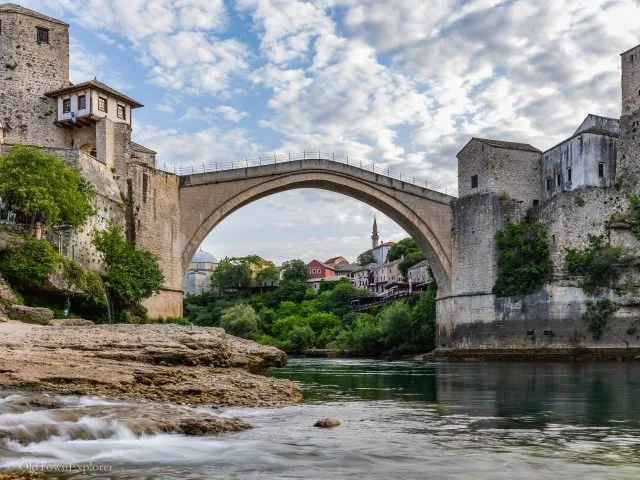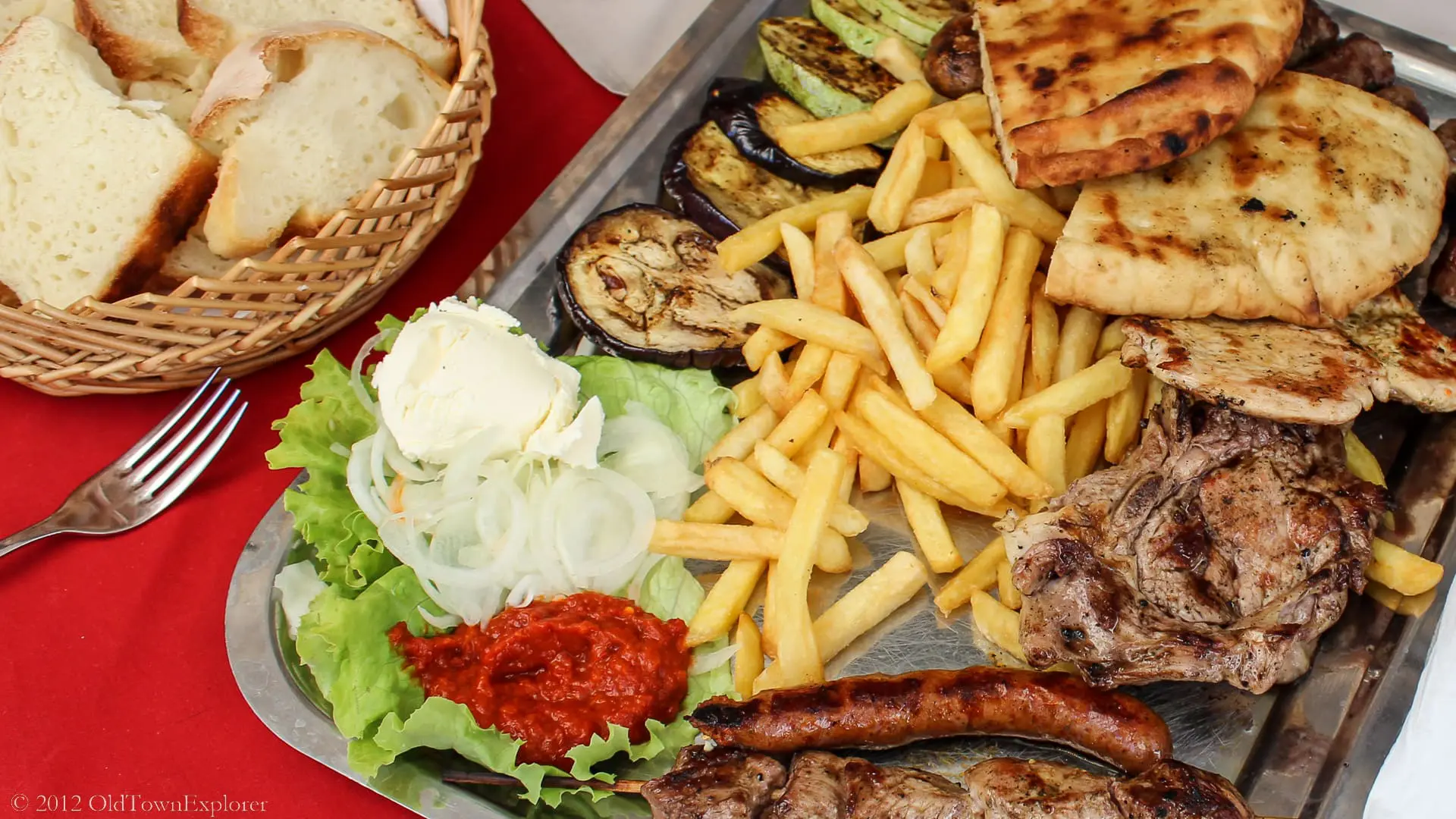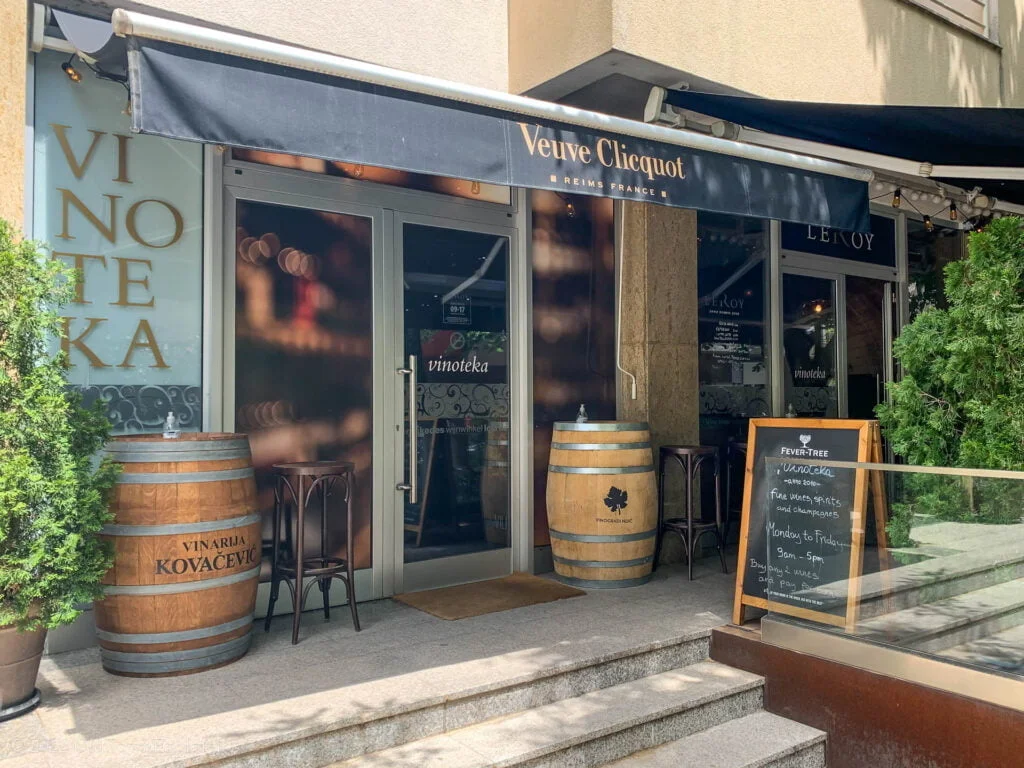Bosnia and Herzegovina
Explore Bosnia and Herzegovina: Food, Wine & Architecture
Bosnia and Herzegovina blends centuries of history, diverse cultural influences, and striking natural landscapes into one of southeastern Europe’s most compelling destinations. From Ottoman bridges and Austro-Hungarian facades to hearty meat dishes and rising wine regions, the country offers visitors a complex and engaging experience. Highlights include UNESCO-listed sites like the Old Bridge of Mostar, medieval tombstones known as Stećci, and the Mehmed Paša Sokolović Bridge in Višegrad.
U.S. citizens can stay in Bosnia and Herzegovina for up to 90 days without a visa. A passport valid for at least three months beyond the planned departure date is required.
We spent a month each in Mostar, Sarajevo, and Banja Luka—three cities that reflect the country’s layered history and regional variety. This guide brings together what we learned during those visits to help you plan your own trip.
Banja Luka
Banja Luka is the administrative center of Republika Srpska and the second-largest city in Bosnia and Herzegovina. Located in the northwestern region known as Bosanska Krajina, it is surrounded by dense forests and the Vrbas River. The city is known for Austro-Hungarian architecture, thermal springs, and its laid-back café culture. The Kastel Fortress and Ferhadija Mosque reflect both its medieval past and Islamic heritage.

Mostar
Mostar is located in Herzegovina, not far from the Croatian border and the Adriatic coast. It is best known for the UNESCO-listed Old Bridge (Stari Most), a 16th-century Ottoman structure that spans the Neretva River. The surrounding Old City retains much of its Ottoman-era street layout and architectural detail, including mosques, bathhouses, and traditional townhouses. Mostar is also a growing hub for wine and culinary tourism.

Sarajevo
Sarajevo, the capital of Bosnia and Herzegovina, lies in a mountain valley along the Miljacka River. Known for its multicultural history and scenic setting, Sarajevo blends Ottoman, Austro-Hungarian, and Yugoslav-era influences in its architecture and daily life. The Baščaršija old bazaar, Gazi Husrev-beg Mosque, and Latin Bridge offer insight into the city’s historical complexity. Sarajevo is also a popular base for winter sports and mountain hiking.

Future Destinations
We enjoyed our time in Bosnia and look forward to returning in the future.
Trebinje
TBD
Bosnia Food
Bosnia and Herzegovina’s cuisine reflects centuries of regional and cultural blending. Ottoman, Balkan, and Central European influences converge in hearty grilled meats, stuffed pastries, and seasonal dairy products. Many traditional foods are tied to specific towns or regions, with protected status reflecting local pride and culinary heritage.
Local Food Products
According to Bosnia and Herzegovina’s Ministry of Foreign Trade and Economic Relations, several regional food items have applied for national geographical indication or designation of origin. These include:
- Sarajevski sudžuk
- Visočka pečenica
- Banjalučki ćevap
- Travnički sir
- Livanjski sir
- Kupreški sir
- Hercegovački sir iz mijeha
- Hercegovački pršut
- Hercegovački med
- Hercegovačka smokva
These products are part of broader efforts to improve the quality, labeling, and sustainability of the country’s agri-food sector.

Traditional Dishes
Many of Bosnia and Herzegovina’s traditional dishes are shared across the Balkans but are distinguished by local preparation methods and ingredients. Some widely recognized dishes include:
- Begova Corba
- Burek
- Somun
- Ćevapi and Ajvar
- Čimbur
- Tufahije
These dishes reflect the country’s regional diversity and culinary heritage, with many recipes passed down through generations and adapted to local ingredients.
Bosnia Wine
Bosnia and Herzegovina’s wine culture is centered primarily in the southern region of Herzegovina, where Mediterranean climates and karst limestone soils support indigenous grape varieties. While the industry is relatively small, it has gained international recognition for its bold reds and crisp whites, many of which are produced by family-run wineries.
Wine Regions in Bosnia
Bosnia and Herzegovina has two main wine-producing regions:
- Herzegovina Wine Region
- Northern Bosnia Wine Region
While Herzegovina remains the country’s primary winegrowing zone, both regions reflect a commitment to local tradition and small-scale production.

Bosnian Wine Varietals
The country cultivates both red and white grapes, with most indigenous to the Balkan region.
Red Wine
- Blatina
- Vranac
- Trnjak
White Wine
- Zilavka
Bosnian wines are gaining recognition for their authenticity and regional character, with a growing number of producers exporting to EU markets and beyond.
Bosnia Architecture
The architecture in Bosnia and Herzegovina is primarily influenced by four significant periods when political and social changes created distinct architectural styles in the region.
Architectural Styles
The country’s architectural development has been shaped by four major periods:
- Medieval
- Ottoman
- Austro-Hungarian
- Yugoslav
These stylistic layers coexist within many cities and towns, offering visitors a rare opportunity to see shifting historical eras represented in close proximity.

UNESCO World Heritage Sites
Three cultural sites in Bosnia and Herzegovina are inscribed on the UNESCO World Heritage List:
- Mehmed Paša Sokolović Bridge in Višegrad
- Old Bridge Area of the Old City of Mostar
- Stećci Medieval Tombstone Graveyards
These sites offer a window into the country’s multicultural past and underscore the importance of preservation amid modern development.
Where Is Bosnia Located?
Bosnia and Herzegovina is in southeastern Europe, on the western edge of the Balkan Peninsula. It shares borders with Croatia to the north and west, Serbia to the east, and Montenegro to the southeast. The country also has a narrow coastline along the Adriatic Sea, centered around the town of Neum.
Regional Overview of Bosnia and Herzegovina
Bosnia and Herzegovina is a mountainous, landlocked country in the western Balkans, bordered by Croatia, Serbia, and Montenegro. Though small in size, it is divided into multiple geographic and historical regions that reflect cultural, linguistic, and religious distinctions.
Bosnia
The northern and central part of the country is referred to as Bosnia. It includes:
Bosanska Krajina – A forested region in the northwest, anchored by the city of Banja Luka.
Bosanska Posavina – The northern flatlands along the Sava River, near the border with Croatia.
Semberija – A fertile plain in the northeast, centered around Bijeljina.
Podrinje (Eastern Bosnia) – A rugged region along the Drina River, with towns like Goražde and Foča.
Central Bosnia (Srednja Bosna) – Includes cities like Travnik and Zenica, known for mixed architecture and historical trade routes.
Tropolje – A highland basin in western Bosnia, with a distinct identity rooted in pastoral traditions.
Herzegovina
The southern portion of the country, Herzegovina, has a Mediterranean-influenced climate and terrain:
West Herzegovina – Includes towns like Široki Brijeg and Grude, largely rural and agricultural.
East Herzegovina – Includes Mostar and Trebinje, known for Ottoman and Orthodox cultural landmarks.
Each region maintains a unique cultural identity shaped by its geography and historical affiliations.
Administratively, the country is divided into two main entities—the Federation of Bosnia and Herzegovina and Republika Srpska—each with its own regional capitals, institutions, and cultural distinctions.
When to Visit Bosnia and Herzegovina
Bosnia and Herzegovina experiences a continental climate in the interior and a Mediterranean climate in the south, leading to varied travel conditions depending on region and season. Here’s what to expect:
Spring (April–June)
One of the best times to visit. Wildflowers bloom across the countryside, and temperatures are mild in both Sarajevo and Mostar. Ideal for city walks, hiking, and visiting historic sites.
Summer (July–August)
Hot and dry in Herzegovina, especially around Mostar and Trebinje, with temperatures often exceeding 35°C (95°F). Mountain areas and Sarajevo remain cooler and are popular for festivals and outdoor activities.
Autumn (September–October)
A prime season for wine tourism and harvest festivals, especially in Herzegovina. Weather is still warm, and crowds are thinner than in summer.
Winter (November–March)
Cold and snowy in the interior, particularly in mountainous areas. Popular for winter sports near towns like Jahorina and Bjelašnica. Urban travel is quieter during this time.
For most travelers, late spring and early autumn offer the best mix of comfortable weather, accessible roads, and fewer crowds.
Getting Around Bosnia and Herzegovina
Transportation in Bosnia and Herzegovina is improving but remains variable depending on region and mode. Travelers should plan for slower travel times, especially outside major cities.
By Car
Renting a car is the most flexible way to explore the country, especially for visiting smaller towns or crossing between regions like Bosnia and Herzegovina. Roads are generally paved but can be narrow, winding, or affected by weather. A compact car is recommended for easier parking and mountain driving.
By Bus
Buses are the most widely used form of public transportation. They connect all major cities and most towns, though schedules may be limited on weekends or in rural areas. Popular routes include Sarajevo–Mostar, Sarajevo–Banja Luka, and Mostar–Trebinje.
By Train
The train network is limited but scenic. The Sarajevo–Mostar route offers one of the most beautiful rail journeys in the Balkans, running through river canyons and mountain passes. Other connections are sparse and often slower than buses.
By Taxi and Rideshare
Taxis are available in most urban areas and are affordable by European standards. Rideshare apps like Bolt operate in Sarajevo and select cities.
By Plane
Bosnia and Herzegovina has international airports in Sarajevo, Banja Luka, Mostar, and Tuzla. Flights are useful for entering or exiting the country, but rarely used for domestic travel.
FAQs About Bosnia and Herzegovina
What are the Regions of Bosnia and Herzegovina?
The country is divided into two entities: the Federation of Bosnia and Herzegovina and Republika Srpska, as well as the Brčko District, a self-governing administrative unit. Geographically, it consists of:
Bosnia – Including regions like Bosanska Krajina, Central Bosnia, Podrinje, and the Sava River basin.
Herzegovina – Including western and eastern Herzegovina, with cities like Mostar and Trebinje.
What language is spoken in Bosnia and Herzegovina?
Bosnian, Serbian, and Croatian are all official languages, with slight regional variations. All use the Latin alphabet.
Do I Need to Speak Bosnian to Visit Bosnia and Herzegovina?
No. English is widely spoken in urban areas, tourist zones, and by younger residents. A few local phrases are appreciated but not necessary.
What Currency is Used in Bosnia and Herzegovina?
The Bosnia and Herzegovina Convertible Mark (BAM). Credit cards are accepted in most cities, but cash is useful for rural areas and small transactions.
Do I Need a Visa for Bosnia and Herzegovina?
Citizens of the U.S., U.K., EU, Canada, Australia, and many other countries do not need a visa for stays up to 90 days. A passport valid at least three months beyond your planned departure is required.
For more information on visa-free travel in Bosnia and Herzegovina, check out our article on traveling visa-free.
Do I Need an Electrical Adapter for Visiting Bosnia and Herzegovina?
Bosnia and Herzegovina’s electrical outlets are Type C, F, and L. Travelers from the United States will need an adapter. It is the same adapter used for the rest of Europe.
If you have many items to plug in, we recommend a travel power strip with multiple USBs and standard plug-ins. Using a power strip, you will only need one adapter to plug the strip into the wall.
Is Bosnia and Herzegovina Safe?
Yes. The country is generally safe for tourists. We stayed for two months in Mostar and Sarajevo and felt very safe.
Exercise typical precautions in cities and be aware of rural areas that may still contain landmine zones—avoid hiking off marked trails.
Is It Safe to Rent a Car and Drive in Bosnia?
Yes, it is very safe to rent a car and drive in Bosnia and Herzegovina. Be prepared for rural, narrow roads and the occasional herd of cows grazing on the side or standing in the road. Smaller is better when selecting your rental car as parking spots are tight.
What do I Need on My Bosnia and Herzegovina Packing List?
In summer, lightweight but modest clothing is appropriate. In cooler seasons, bring layers. If visiting religious sites, carry a scarf or extra covering.
